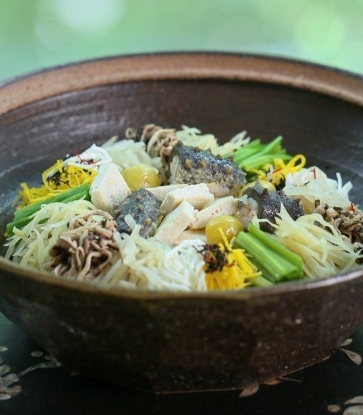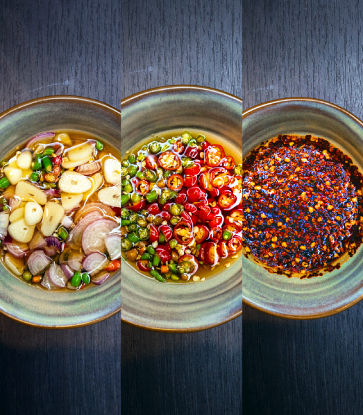At Fiotto, the only MICHELIN Green Star and one-MICHELIN-star restaurant in Busan, kombucha isn’t merely a drink — it’s a philosophy in liquid form. For Chef Kim Ji-hye, the journey began in 2018, a time marked by personal recovery after undergoing thyroid cancer surgery. In search of nourishment that could heal the body from within, she was drawn to the quiet stories of those abroad who brewed their own kombucha.
Determined to start from scratch, Kim refused to use commercial Symbiotic Culture of Bacteria and Yeast (SCOBY), a common culture used to ferment kombucha. Instead, she tracked down unpasteurized, living kombucha — an increasingly rare find — and cultivated her own SCOBY with patient precision. Referencing foreign recipes and YouTube tutorials, she meticulously experimented with temperatures, sugar levels, and tea bases. After six months of trial and error, a quiet yet resilient life form began to grow in her kitchen, marking the birth of Fiotto’s kombucha.
Like the passing of seasons, Ji-hye's kombucha never stops evolving. Each change in Fiotto’s menu brings renewed contemplation. Acidity softens, sweetness recedes, and the aroma of fermentation inches closer to the dish. Balancing the flavor becomes a daily ritual, where taste is reexamined and harmony is pursued.
To simply call it a “drink” would be a disservice. Fiotto’s kombucha captures the grain of time, the warmth of human touch, and the breath of the seasons. It is a liquid imbued with the subtle mood of the farm — the wind, the soil, the weather — bridging summer and fall crops with the leaner moments of winter and spring. Some batches bloom in as little as two weeks; others ferment gently over nearly a year. In that quiet transformation, once-piercing acidity mellows, and scent lingers. The kombucha evolves into pickles, or becomes a seasoning that enhances dishes with a whisper of smoke.
Even its storage defies convention. Vegetables preserved in kombucha and salt are dried, powdered, and used in new ways in the kitchen.
People often say that Fiotto’s kombucha is unlike anything on the market — and the distinction is clear. It stands apart from carbonated, flavor-enhanced, shelf-stable beverages. Instead, this is a tea made with the delicacy of a dried rose steeped in warm water, lightly sweetened only to initiate fermentation.
Its unblended purity makes it challenging to work with, but that challenge brings complexity. Ji-hye tracks its subtle, daily shifts, waiting for the perfect moment when kombucha and cuisine align.
At its core, Fiotto follows a rhythm that starts at the farm. Ingredients shaped by sun, wind, and weather take on new meaning on the plate, reflecting time and place. Neither kombucha nor cuisine ever fights the season; they flow with it, in step with nature.
Rose Kombucha (yields approximately 2 liters)
Ingredients:
- 15-20 grams, dried rose petals
- Healthy SCOBY (store-bought SCOBY is acceptable)
- SCOBY starter liquid
- 190-200 grams, unrefined sugar (organic sugar can be used as an alternative)
- 2 liters, spring or filtered water
Instructions:
1. Bring 500 milliliters of water to the boil.
2. In a clean glass jar, combine the unrefined sugar, dried rose petals, and the boiled 500 milliliters of water. Stir until the sugar fully dissolves.
3. Let the mixture steep for about 5 minutes, allowing the rose petals to infuse, then strain out the petals.
4. Add the remaining 1,500 millilitres of water. Once the mixture is lukewarm, add the SCOBY and SCOBY starter liquid. Stir gently.
5. Cover the jar with a breathable cloth and secure it tightly with a rubber band. Make sure air can still pass through.
6. Leave the jar at room temperature (18-26 degrees Celcius) in a shaded, well-ventilated area for the first fermentation. Check progress daily for about 5–10 days. (Try to minimize movement during this period to allow a new SCOBY to form properly.)
7. During the first fermentation, taste the brew with a wooden spoon. When it reaches your preferred balance of tanginess and residual sweetness, strain the liquid.
8. Transfer the strained kombucha into a sealable glass bottle for the second fermentation. Ferment for another 3-–5 days in the refrigerator.
9. During the second fermentation, you may add flavors if desired. Once the flavor develops to your liking, store it in the refrigerator and enjoy it as a beverage.



















